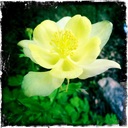ASSAY: A JOURNAL OF NONFICTION STUDIES
2.1
2.1
|
In 1903, the noted naturalist John Burroughs published an article in the Atlantic Monthly titled “Real and Sham in Natural History,” which sparked a literary showdown between naturalists and writers. Burroughs called writers like Jack London, Ernest Thompson Seton, and others, “nature fakers” for what he claimed was a portrayal of animals in fiction in a sentimental and anthropomorphic fashion. He went so far as to call it “yellow journalism of the woods” (299).
The role of animals in nonfiction that I examine here is very much apart from Burrough’s claims and the vast genre of ecocriticism. Animals have a rich tradition in fiction, but their presence in contemporary nonfiction is rarely considered in the same way. Yet essayists employ animal counterparts to convey deep feeling and provide deeper meaning about themselves and the subjects they are writing about. This essay is emphatically not a dive into ecocriticism; rather, it is a close study of how authors of nonfiction use animals as a prism through which they can show readers their secret selves and amplify the narrative. Using animals as a literary device in this way, Charles G. D. Roberts said, “frees us for a little from the world of shop-worn utilities, and from the mean tenement of self” (29). For Jo Ann Beard, Edward Hoagland, and Abigail Thomas, among others—animals are devices that allow each writer to focus the lens of self on a beast in order to illuminate human nature. This type of reverse-anthropomorphism allows the author to show very human feelings using animals as the foil. Many times, when we ascribe animal behavior to human feelings, it is said that we are “projecting.” In her recent book, Animal Madness: How Anxious Dogs, Compulsive Parrots, and Elephants in Recovery Help Us Understand Ourselves, Laurel Braitman, a historian of science at MIT, explored the scientific concept of animal emotions. Can animals feel sadness, for example and can they be depressed? The answer is yes, and it’s important to acknowledge it early on here because it is a literary argument that has simmered since the “nature fakers” debate in the early 20th Century. However Braitman says in her TED Talk, “anthropomorphizing well…is based on accepting our animal similarities with other species,” meaning that we should acknowledge our human/animal “shared generalities, not unfounded projections.” Of course humans and animals can’t know exactly how the other thinks or feels, but we can operate from a base set of emotional commonalities. In “Lament the Red Wolf,” from his 1988 essay collection Heart’s Desire, a compendium of thirty-five essays over twenty years, Edward Hoagland writes about the use of animals in literature this way: Animals used to provide a low life way to kill and get away with it, as they do still, but, more intriguingly for some people, they are an aperture through which wounds drain. The scapegoat of oldentimes, driven off for the bystander’s sins, has become a tender thing, a running injury. There, running away—save it, save it—is me: hurt it and you are hurting me. (80) |
|
When a wound drains, it means the wound is healing. In Hoagland’s view, an animal can be the lens through which we heal our wounds. Jo Ann Beard, during a lecture she gave at the Bennington Writing Seminars in January 2014, said, “Whether a writer is writing about a weasel, or a moth, or a dog, they are really writing about so much more than that.” Using animals as muse, these writers elevate their essays to parable, the universal required of nonfiction. If an aperture is a hole or an opening through which light passes, it therefore makes sense for these essayists to use animals to shine a light on human nature.
|
|
|
Both essays are powerful meditations on humanity that use an insect to carry the message.
|
Of Reptiles: What Turtles Can Teach Us
|
|
Edward Hoagland’s “The Courage of Turtles” is, on the one hand, about suburban development squeezing out the animal habitat Hoagland enjoyed as a child. On the other hand, it is also about Hoagland’s personal struggle with the disappearing landscape of his childhood and his finding a place where he feels most at home.
When he wrote “Courage” he was about thirty-six years old and had already spent time with Ringling Brothers and Barnum & Bailey Circus and in the Army. He was living on the Lower East Side in New York City and was about a year away from buying the remote Vermont farmhouse where he would spend many summers and eventually settle. “Courage” takes us through Hoagland’s happy, if not lonely, boyhood and introduces us to the animals he spent time with on Dr. Green’s Pond, then on Taggart Pond, and Mud Pond, in New Canaan, Connecticut. As a boy at the ponds he played with big water snakes and otters, foxes and minks. He kept dogs and goats as companions before moving on to the huge cats and elephants he worked with during his years with the Ringling Brothers and Barnum & Bailey circus. Hoagland was a stutterer and, in interviews, talked openly about his feeling of isolation because of his impairment. More importantly he talked about how animals became his constant companions because he felt so alone. In an interview in The Burlington Free Press (June 26, 2011), Hoagland said: If you can’t talk to people you spend a lot of time with your dog, who you are able to talk to. You become very close to pets, and perhaps become an observer of wildlife. And you strengthen your natural intuition and your so-called sixth sense, your second nature, which other people don't need for happiness or survival. Although animals can’t speak, we talk to them and for them. Although they do not have language, we share a common one. They provide a place to park our anxiety and our fears. And they comfort us, especially when we are lonely and seeking a connection. John Steinbeck writes:
A writer out of loneliness is trying to communicate like a distant star sending signals. He isn't telling or teaching or ordering. Rather he seeks to establish a relationship of meaning, of feeling, of observing. We are lonesome animals. We spend all life trying to be less lonesome. One of our ancient methods is to tell a story begging the listener to say—and to feel— ‘Yes, that's the way it is, or at least that's the way I feel it. You're not as alone as you thought.' These animals quenched Hoagland’s loneliness and in the essay he tells us why he chose a turtle as the emblem of his lost boyhood: “I was allergic to fur, for one thing, and turtles need minimal care…They are personable beasts. They see the same colors we do and they seem them just as well…” (30. Hoagland is openly nostalgic about wanting to return to the company of the turtles on the ponds where he spent his boyhood. For him it seems the turtle represents a specific time in his life—the safety of home, the innocence of childhood, the solace of a mother - which he doesn’t yet want to walk away from. Perhaps this next passage is as much about returning to the womb as it is about the nature of turtles:
they rock rhythmically in place, as we often do, although they are hatched from eggs, not the womb. (A common explanation psychologists give for our pleasure in rocking quietly is that it recapitulates our mother's heartbeat in utero.) (30) Hoagland sees himself in the turtles, perhaps as representing his natural state—guarded, dogged, and determined. He describes the turtles as if they are human:
Turtles cough, burp, whistle, grunt and hiss, and produce social judgments … They pee in fear when they’re first caught, but exercise both pluck and optimism in trying to escape, walking for hundreds of yards within the confines of their pen, carrying the weight of that cumbersome box on legs which are cruelly positioned for walking. (30) Hoagland clearly empathizes with the turtle when he writes of the “cumbersome box on legs, which are cruelly positioned for walking,” perhaps describing his own tongue that is cruelly positioned for talking.
Like the turtles, Hoagland too is enduring an environment (New York City) that feels artificial to him and just as he is trying to escape the city (while the turtles are trying to escape their cardboard boxes), he doesn’t yet know just how he will do it. When he describes a turtle he rescued from Mud Pond to live with him in the city, he compares that turtle’s predicament to the human condition. Hoagland writes: “It's like the nightmare most of us have whimpered through, where we are weighted down disastrously while trying to flee; fleeing our home ground, we try to run” (31). He feels trapped like the turtle in that box. The climax of the essay comes when Hoagland decides, after living for years in New York and seeing all manner of turtles in captivity, that he will finally rescue one. He finds some sad-looking turtles in a box on First Avenue “creeping over one another gimpily, doing their best to escape,” and he decides to rescue a diamondback terrapin. A diamondback is a tidewater turtle, he explains, which needs seawater to live happily. Hoagland becomes quickly exasperated with the turtle “thumping interminably against the baseboards,” (33) and carries it in a paper bag to the Hudson River. We follow Hoagland, thinking he is trying to set the turtle free. We empathize as he considers for a moment he’s made a mistake after he throws the turtle into the “bottomless” river where the “the waves were too rough for him, and the tide was coming in, bumping him against the pilings underneath the pier.” Hoagland has just spent pages and pages of this essay lauding the characteristics, the persistence, the grace and the courage of these turtles before delivering his final line that lands like a punch to the gut: “But since, short of diving in after him, there was nothing I could do, I walked away” (35). What is Hoagland really walking away from? His vanished childhood, a habitat that no longer fits him? The turtle is hero to Hoagland’s anti-hero. It is nature set in direct contrast with humanity. Hoagland is showing us that nature will keep trying, but we humans give up and walk away.
|
|
Megan Culhane Galbraith’s work has appeared or is forthcoming in Literary Orphans, Hotel Amerika, Revolution John, drafthorse, and The Notebook, among others. Her essay, "Timepiece," was judged by Xu Xi to be a finalist in AWP’s WC&C Scholarship competition. She was a Binders Scholar at Bindercon 2014 and guest editor of The Notebook. She is at work on a collection of essays titled, The Guild of the Infant Saviour. A graduate of the Bennington Writing Seminars, she lives in a hayfield in Cambridge, NY with her husband and two sons who want to be dairy farmers. Find her @megangalbraith and http://megangalbraith.wordpress.com/
|

